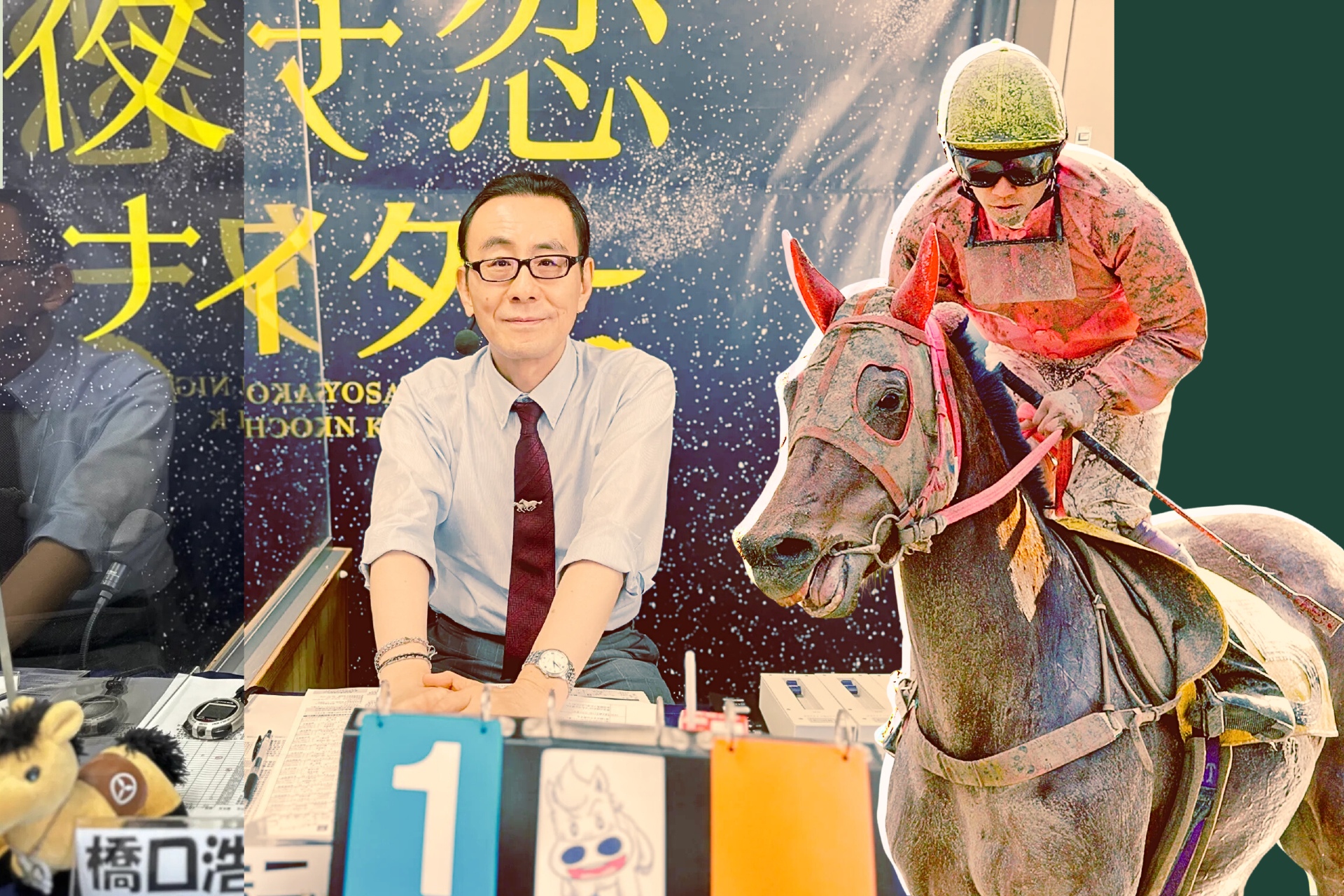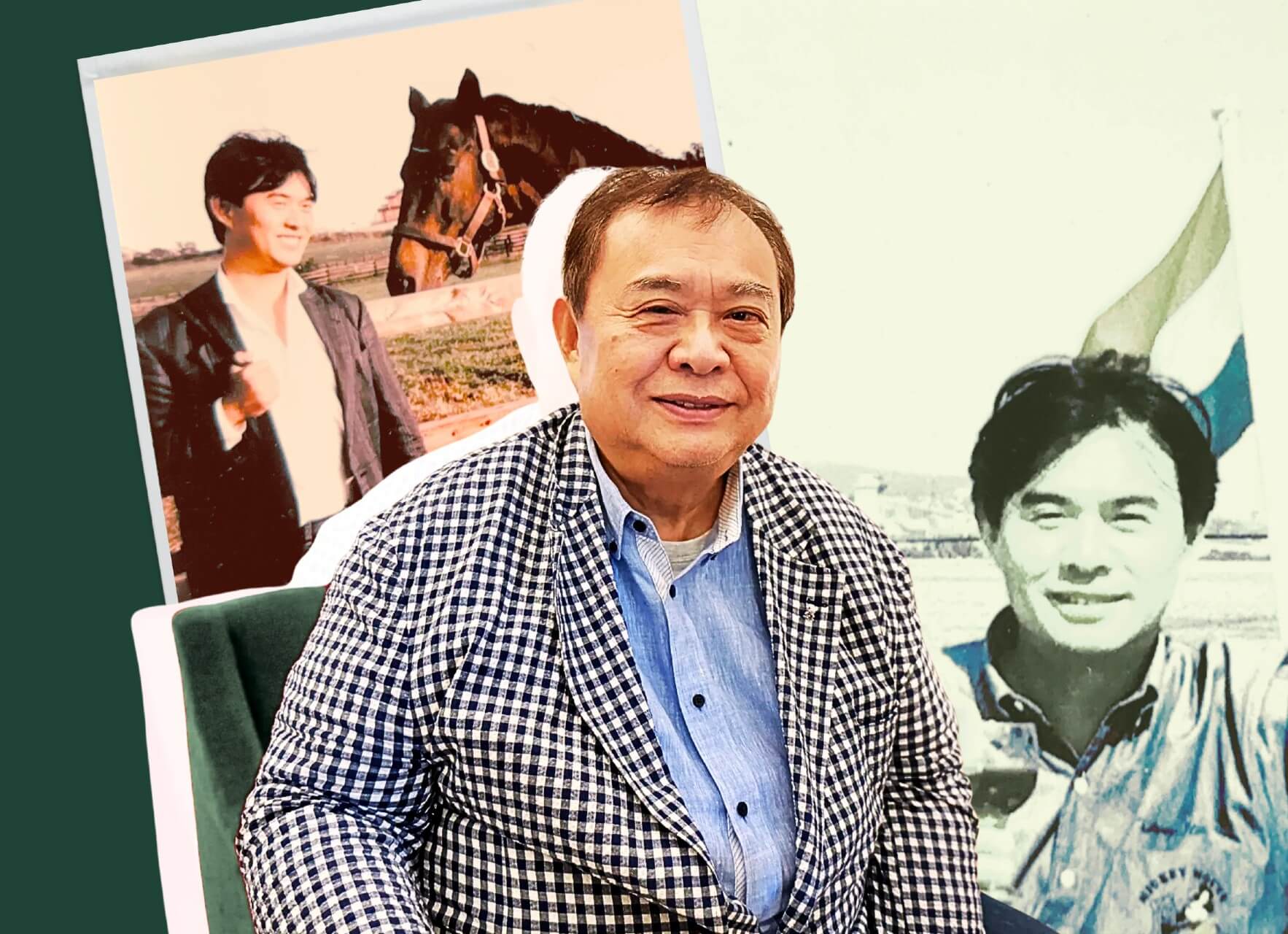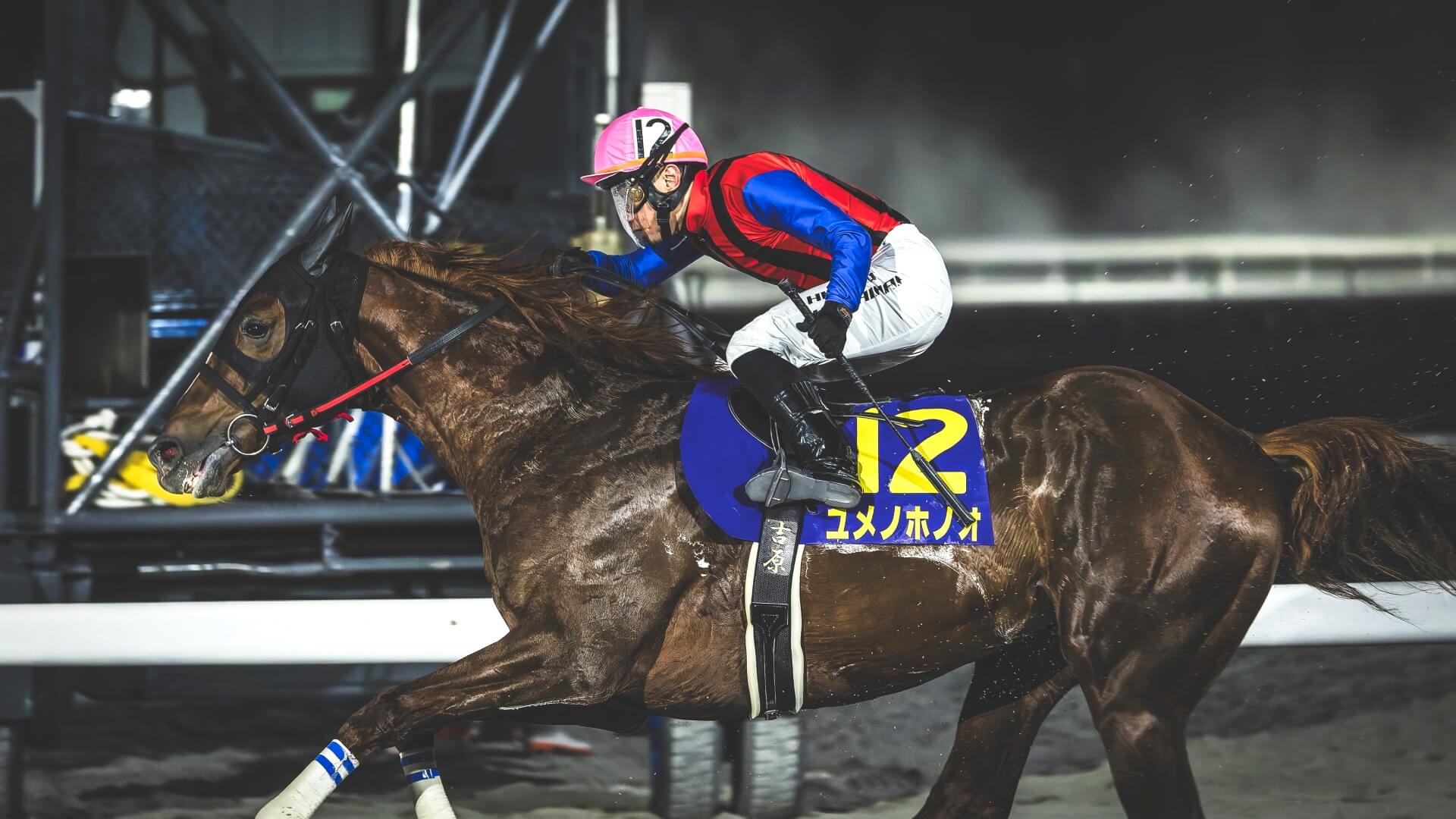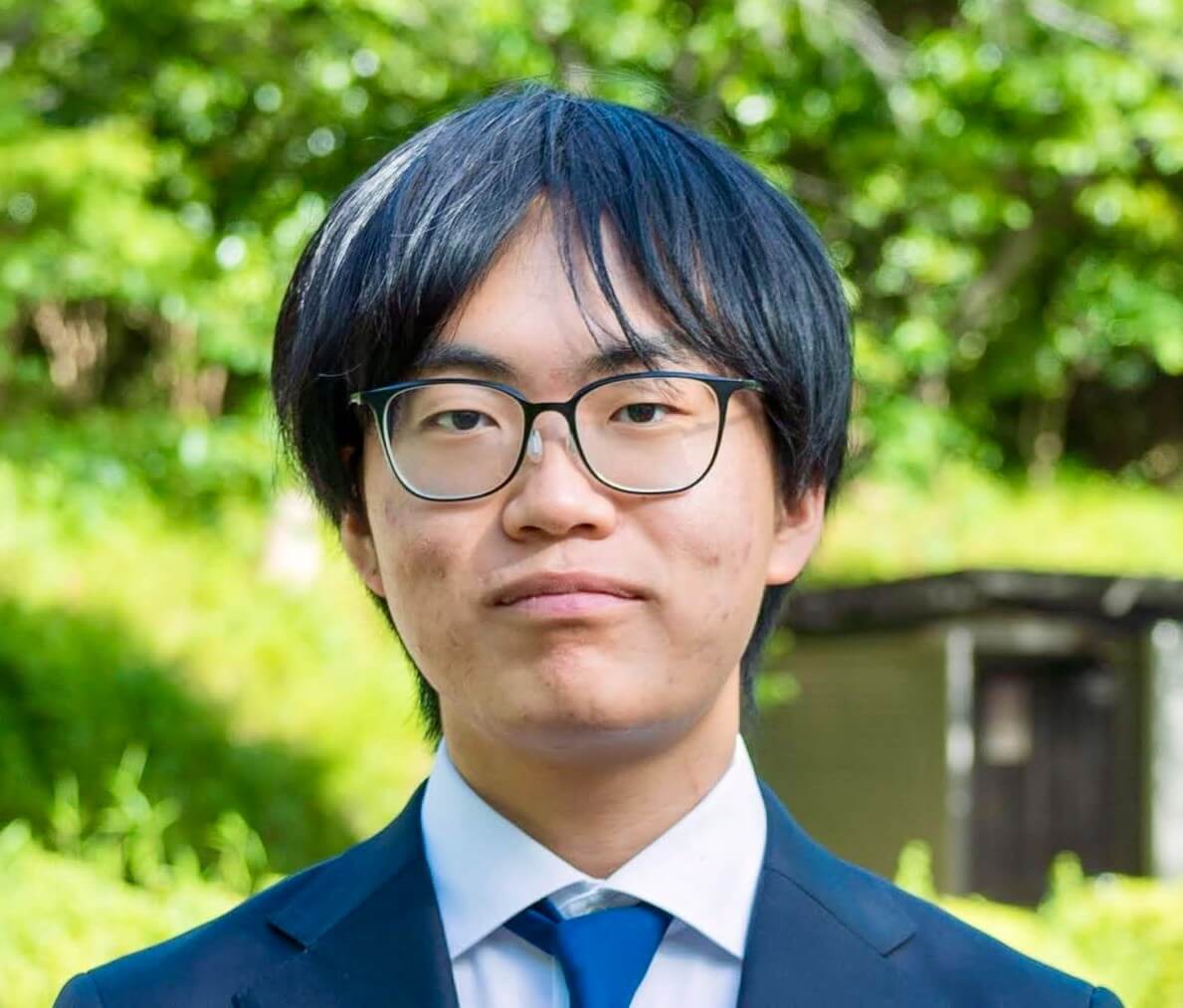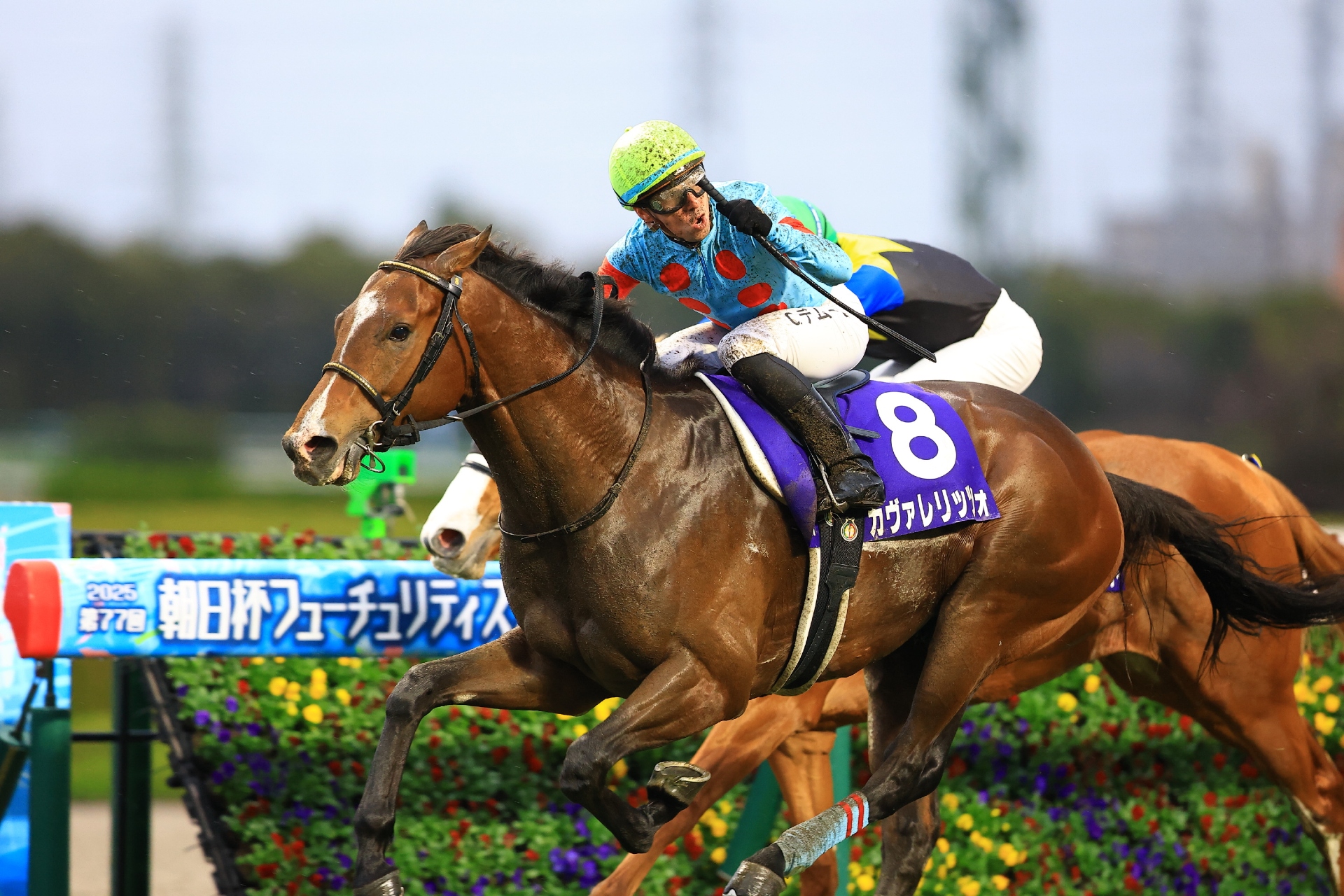Beyond The Call: How Hashiguchi’s Voice Saved Kochi Racecourse
How race caller Koji Hashiguchi used storytelling, music, and the fame of Haru Urara to save a track from financial ruin.
KOJI HASHIGUCHI opens the door to the broadcasting booth on the fifth floor of the main grandstand at Kochi Racecourse, where, since 1994, he has been conveying the NAR track’s character from behind the microphone as the track’s race caller.
“Oh, I’ve been waiting for you,” he says.
Anyone who has heard Hashiguchi’s unique commentary and gentle voice would not be surprised at the warmth of the greeting, as if welcoming an old friend into the small room that sits above the charming racecourse below.
The lively music that plays to accompany the horses’ odds during the betting period, the pre-race fanfare, and the call to post – all are handled by Hashiguchi. He entered this world with no prior experience in horse racing and has dedicated his life through the microphone to the reconstruction of this small racecourse, which was on the verge of closure when he arrived.
His career has gone beyond simply calling races, presenting as well a new possibility for announcers to compose music, weave stories, and act as a catalyst for a nationwide social phenomenon.
Before Hashiguchi, Kochi Racecourse – framed by small wooded hills not far from Shikoku’s south-central coastline – seemed destined to the same fate of small, regional racecourses the world over: a slow slide into extinction due to dwindling attendance and turnover, and aging facilities.
To understand the influence he has had on Kochi’s transformation and its unlikely rise within the NAR, we need to go back to Hashiguchi’s formative years and the unconventional path he walked to horse racing.
“I was in a band in my student days. It cost a lot of money,” he says. Looking for a high-paying part-time job to earn money for instruments and travel expenses, he auditioned for his local RKC Kochi Broadcasting, which was the beginning of everything. He had no desire to become a TV or radio announcer; his only goal was to fund his band activities.
It was then that he heard that Kochi Racecourse was looking for a race caller. The deciding factor was not a passion for horse racing, but rather a spirit of challenge in the face of adversity. It was a perfect fit.
“Back then, Kochi Racecourse had a cumulative deficit. When I heard that, I thought, ‘Well, I’ll do it.’ I wanted to give it my all and see if I could do something to fix the situation,” he explained.
It was the start of what he called a “crazy gamble” —an amateur with no knowledge of horse racing was taking on the future of a racecourse on the brink of collapse.
Hashiguchi’s philosophy of race calling is centered on his primary goal: “to preserve and protect Kochi racing.” To achieve this, he aimed for the concept of a “racecourse with a face”.
“Because we almost went out of business once, everyone’s purpose is clear: to work together,” he says.
The strength of Kochi Racecourse lies in this sense of unity, manifest in the warm atmosphere he experienced when trainers and jockeys welcomed him into this world as an amateur 31 years ago.
To share this sense of unity with fans, he created programs like “Morning Outlook.,” which is still streamed on YouTube, and the pre-race “Jockeys’ Talk.” These programs aim to show fans the true personalities and individuality of the jockeys, bringing a sense of closeness. It is an attempt to foster a deeper fan psychology, where people feel “happy to see them [the jockeys] celebrating a victory” rather than just focusing on their own winnings. This project also had an aspect of supporting jockeys with fewer mounts by paying them an appearance fee.
It is precisely these human-centered efforts that have become the source of what he calls the inexhaustible charm, or “story material,” of horse racing.
“Horse racing has so many stories, doesn’t it?” says Hashiguchi, who believes in the power of the stories that a long history of horse racing holds. He speaks of being impressed by the story of Queen Elizabeth II of the United Kingdom, who took a keen interest in Japan’s champion Deep Impact, whose bloodline traced back to her own horse, Highclere. He says that such stories have the power to instantly make events from a distant world “feel close.”
This belief is also reflected in Hashiguchi’s unique routine of introducing horses related to the runners in each race.
His conviction is connected to the wish that, “by bringing out the various stories within Kochi racing and making people feel a sense of closeness, even those who aren’t from Kochi Prefecture might feel like, ‘This is my racecourse.'”
The nationwide boom in 2003 that shone a light on the 113-race losing streak of Kochi’s “renowned mare who never won” Haru Urara was nothing but a practical application of this philosophy.
Even in his race calling, Hashiguchi’s style sets him apart from the announcers of major media outlets in the JRA’s racing. While he values objectivity and actively incorporates race lap times, inspired by broadcasts from the American sports channel ESPN, he is also very particular about the pronunciation of horse names.
He says that when a horse’s name includes English or another foreign language, he tries to get as close to the original pronunciation as possible. Hashiguchi says this is a sign of respect for the meaning embedded in the horse’s name, much like how Jiro Shirakawa, a former Radio Nikkei announcer, intentionally pronounced the names of horses like “Machikane Tanhoiza” and “Nice Nature” with their original, elongated vowel sounds that are typically not voiced in Japanese pronunciation.
Hashiguchi’s dedication and versatility are evident in the fact that he is not just the owner of a “voice.” Having been involved in music since his high school days in the brass band, he now produces all the music used at Kochi Racecourse himself, including the fanfares.
Hashiguchi reveals his production process, stating, “People often call it DTM (Desktop Music), but it’s actually done with instruments; I play it by hand. I don’t use a computer at all.” He uses a sequencer and a sampler, performing every part with his own hands and layering the recordings. The exhilarating fanfares that announce the start of a race and the background music that colors the pre-race atmosphere are all born from his fingers.
Hashiguchi’s journey has proven that an announcer can move the very destiny of a racecourse. Through his voice, music, and storytelling, Kochi Racecourse has been transformed from just another regional racecourse into something that feels like a second home for racing fans, wherever they are from.
“Of course I watch other races,” he says. “But I’d be happiest if more people came to love Kochi as their home base.” ∎
